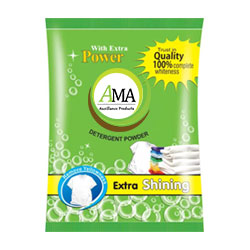Thanks to the AMA Auxillance Products, I am a winner all the way……
My crops flourished and even got rewarded with Appreciation & Accolades !

People have been experimenting with ways to use the power of enzymes to clean clothing for a long time; in fact, the first patent was in 1913.
As the stains are made of different types of molecules, a range of enzymes are required to break them down. Proteases break down proteins, so are good for blood, egg, gravy and other protein stains. Amylases break down starches and lipases break down fats and grease. Washing powders usually only contain one type of enzyme, though some have two or all three.
For the last over 50 years, the use of enzymes in detergents has been the largest of all enzyme applications. Detergents currently represent by far the largest single market for industrial enzymes. The development of detergent enzymes has mainly focused on enzymes capable of removing stains. Enzymes have been responsible for numerous improvements in wash performance since the 1960s. Enzymes have contributed greatly to improvement in performance of detergents and have also contributed to more environmentally adapted washing and cleaning because enzymes are biodegradable, they can replace harsh chemicals and reduce wash temperature. The benefits of Enzymes in Detergents are better cleaning and stain removal, shorter washing time, lower washing temperature, reduced water and energy consumption, more effective soil release and minimal environment impact.
The activity of enzymes is given as U/g (Units per gram), where the unit relates to a specific assay (measure of enzyme activity), e.g. one unit will liberate 1 mg of substrate per minute at pH7.0 at 25ºC.
Dosage
10 to 15 gm of enzyme is required for 1 Kg of high quality washing powder.
